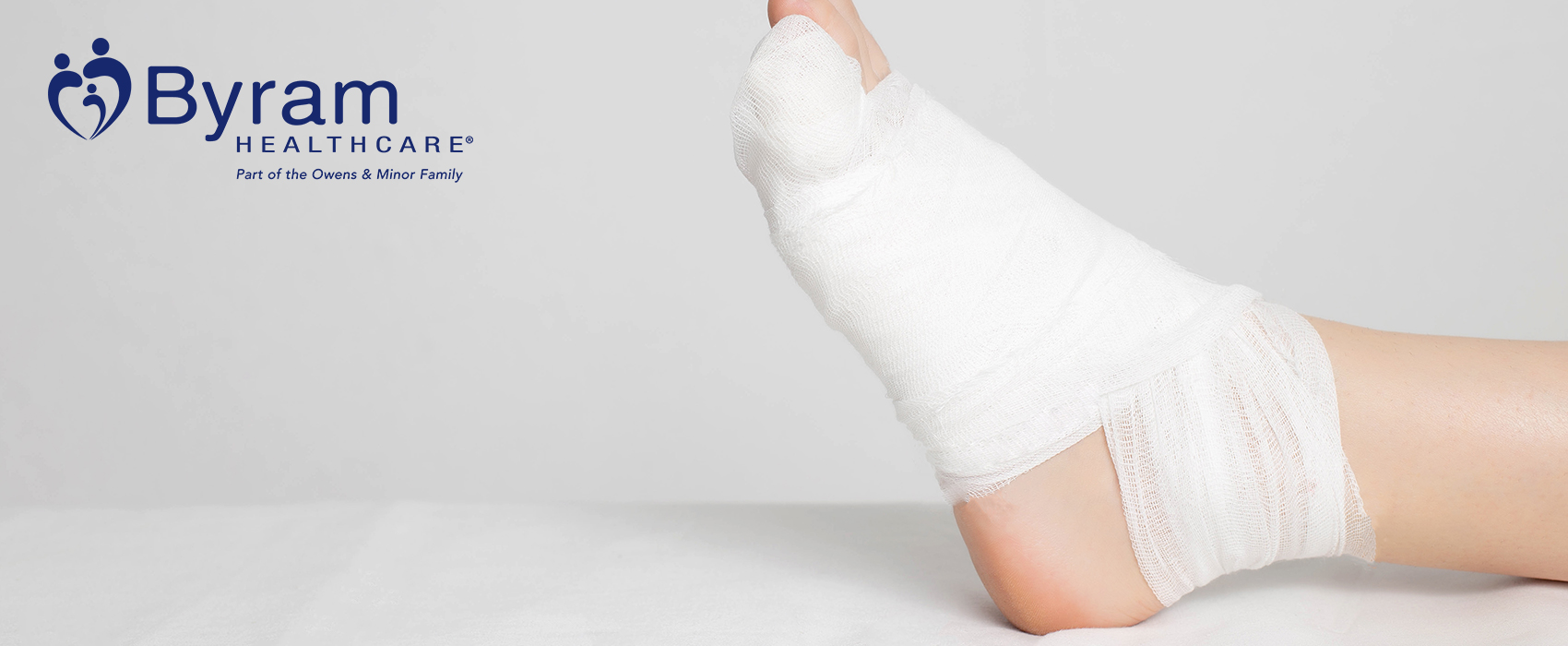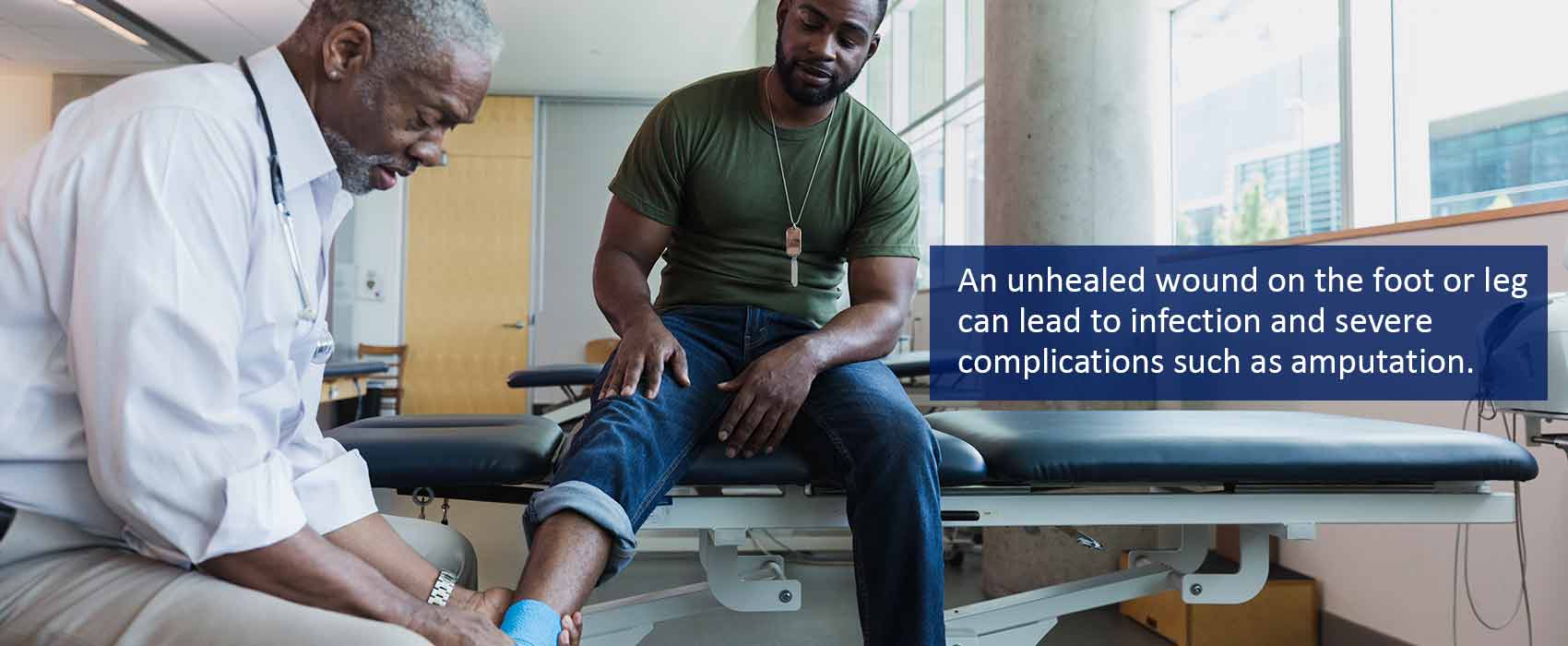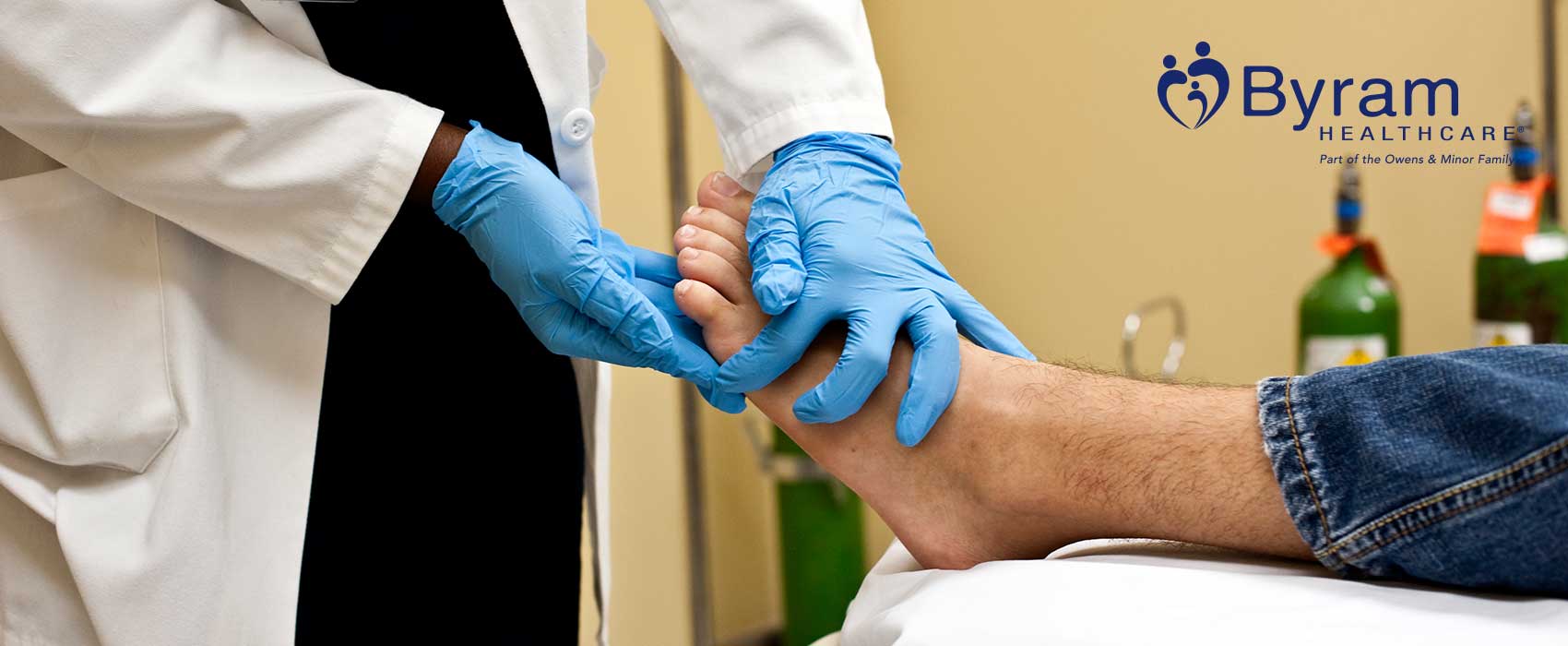
Most people live their day-to-day lives without incident. Unfortunately, every now and then something happens that results in injury. While most of these occurrences result in minor, acute wounds that heal within a few days or weeks, sometimes the injury is more substantial. When acute wounds don’t heal properly or become infected, they result in chronic wounds. In more severe accidents, extreme trauma can also lead to chronic wounds. All chronic wounds begin as acute wounds and the problem only arises when the site of injury doesn’t progress through the predictable rate of healing.
Wounds are considered chronic when they take longer than four weeks to heal after initial treatment. If the healing process surpasses two weeks, it’s a more serious chronic wound that needs to be cared for properly to avoid complications. In this article, we’ll go over everything you need to know about how to take care of chronic wounds and what to do when complications arise.
Causes of Chronic Wounds
Chronic wounds can occur for any number of reasons. The main reason that chronic wounds occur is due to increased bacterial load, lack of blood supply, infection, or the wrong type of treatment. Other chronic wounds occur due to the intensity of the trauma. It’s important to monitor all of your wounds to make sure that they don’t turn chronic. Chronic wounds also occur from:
- Surgical wounds that reopen or stitches that rip
- Pressure ulcers—skin that breaks down due to an overload of pressure
- Poor circulation—foot or leg injury such as arterial or venous ulcers
- Diabetic ulcers—loss of circulation or feeling from diabetes that results in unknown wounds or lack of wound care
- Bacterial infections
- Poor nutrition
- Chronic diseases
- Chemotherapy or radiation
- Smoking
- Obesity
How a Wound Becomes Chronic
Most wounds will progress through a normal healing process that consists of four distinct phases. A wound starts out in hemostasis, which is the initial clotting that begins to form immediately after the injury occurs. Hemostasis is your body’s primary line of defense to help get the bleeding under control and begin the healing process. Some conditions may interfere with hemostasis, so it’s important to communicate with your doctor if you have diabetes or other chronic conditions. The next stage is inflammation. During this time, your body will send signals to your cells to help protect the site of injury.
The inflammation stage of healing is what differentiates an acute wound from a chronic wound. In acute wounds, inflammation leads to proliferation fairly quickly. In chronic wounds, the wound festers in the inflammation stage and does not get any smaller. In some instances, the wound actually worsens as your body is unable to activate fibroblasts and fight against infection. If you think that you have an infected wound, it’s important to call your doctor immediately to change your treatment plan and avoid serious complications.
How to Help Your Chronic Wound Heal
To make sure that your wound is healing as best as possible, it’s important to take some preliminary steps. These may seem like common sense, but many people bypass simple actions due to concern or tunnel vision of serious wounds. Make sure that you do the following to help your chronic wound heal as fast and safely as possible.
- Wash Your Hands
- Keep Your Dressing Clean
- Be Careful
- Focus on Nutrition
- Keep it Dry
Treating Your Chronic Wound
While treating your chronic wound, it’s important to keep an eye on the physical appearance so you can keep track of the progress of healing. If you notice anything getting worse, changing color, emitting a foul odor, or discharging, call your doctor immediately.
Cleaning
Basic cleaning is essential in chronic wound healing. Make sure that you use whatever your doctor advises, which is often a saline solution. Clean the area thoroughly, regularly, and every time you’re going to change the dressing.
Debridement
Debridement is the process of removing dead or inflamed tissue. While this is not a very comfortable process, it’s necessary to allow your wound to properly heal. In serious chronic wound cases, your doctor may need to perform debridement multiple times throughout the healing process. To keep you as comfortable as possible, your doctor will likely administer a local anesthetic and/or painkiller. Larger wounds may require general anesthetic to avoid severe pain during the process.
Wound Dressings
Wound dressings will help protect and heal your wound. Films, gauze, hydrogel dressings, hydrocolloid dressings, dressings with silver or alginates, and foam dressings are the most common types of dressings for chronic wounds. The general principles of changing a chronic wound dressing include the following:
- Wash your hands thoroughly with soap and water.
- Make sure to set all of your supplies out on a clean surface or paper towel prior to getting started.
- Open all of the packages for your wound care and cut any tape in advance.
- Use specific wound care scissors to cut any dressings and make sure that they are cleaned both before and after use.
- After removing your old wound dressing, take some time to examine it and note any changes to your wound. If you notice an increase in drainage, a new odor, a change in color (green or blue) of the drainage, redness, increased pain, have a fever over 100°F, or have any spikes in your blood sugar levels, call your doctor immediately. These can be signs that your acute wound isn’t healing properly or is infected.
- Clean your acute wound with the cleaner that your doctor recommended. Oftentimes soap and water are sufficient, but you may also use a saline or specific type of wound cleaner. Clean the wound from the inside out.
- Apply your new wound dressing and tape down the edges or wrap it with gauze to secure it.
- Wash your hands and clean up the area. Make sure to clean and sanitize any equipment you used.
Compression Stockings or Bandages
Compression stockings can help heal chronic wounds by increasing your body’s circulation. The pressure from varying compression can help your veins carry blood both to your heart and to the wound itself.
Antibiotics
Antibiotics are often needed in chronic wounds as a preventative measure to avoid infection. If infection does occur, it can be dangerous and lead to sepsis. Talk to your doctor about any medications your on prior to starting antibiotics.
Hyperbaric Oxygen Therapy
Hyperbaric oxygen therapy involves a special chamber for those with chronic wounds to breath oxygen under high pressure.1 This helps to increase the oxygen concentration in the blood and improve blood supply.1
Ultrasound and Electromagnetic Therapy
This treatment option utilizes sound waves to treat the chronic wound. The sound waves make the tissue warmer and may help improve circulation. Ultrasound and electromagnetic therapy are still under review but have had promising studies.1
Negative Pressure Wound Therapy
Negative pressure therapy involves covering the wound with an airtight dressing that is connected to a pump by a thin tube.1 The pump then continuously sucks out fluid from the wound, creating negative pressure to help improve blood flow.1
Skin Grafts
In very serious wounds, skin grafts may be needed. Skin grafts are done when wounds are unable to close on their own due to the size. They involve taking skin from other parts of your body and transplanting it onto the wound.1
The Final Healing Stages of a Chronic Wound
After you’ve taken the appropriate care of your chronic wound, it will slowly start to migrate from the inflammation stage to the proliferation and remodeling stages. During proliferation, your wound starts to get smaller and more connective tissues emerge. Growth factors are produced and begin to multiple. Continue to care for your chronic wound according to your treatment plan to avoid reverting back to the inflammation stage, which is possible. Finally, during remodeling, your collagen production increases, and the wound begins to close. Remodeling can take years in serious chronic wounds as it incorporates the entirety of scar tissue healing. If you’re worried about the size or intensity of the scar, talk to your doctor about your options for scar care or post-remodeling scar treatment. There are plenty of topical ointments that can help you minimize the appearance of your scar in a safe, effective manner.
Conclusion
If you want to avoid any serious complications or infection, it’s important to take care of chronic wounds properly. The best way to do this is to have a good supply of wound care supplies and any wound dressings you may need. Byram Healthcare is a leading wound care supplier with an outstanding Chronic Wound Program and plenty of educational materials. We aim to help reduce costs to the health care system, patients, and any facilities that may need supplies through direct ordering and comprehensive resources. At Byram Healthcare, we have everything from bandages and gauze to collagen dressings, hydrogels, and compression bandages. Check out our wound care product catalog to get started with your order today.
Sources:
1 https://www.ncbi.nlm.nih.gov/books/NBK326436/




